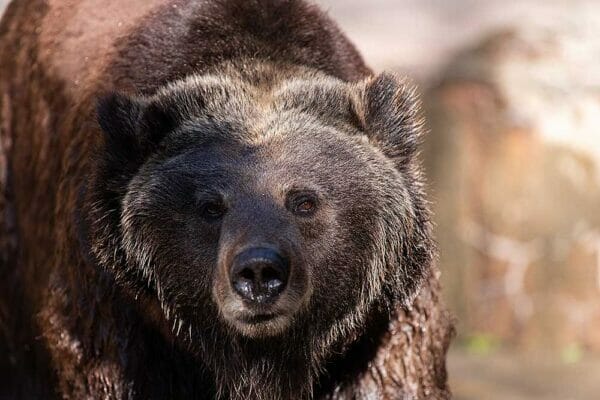
On the most northern Island of Japan, Hokkaido, enormous brown bears are thriving. The population has more than doubled to about 12,000 since 1990.
The bears are a closely related subspecies of brown/grizzly bears. Because they live in a similar environment to Kodiak Island, the bears are similar in size to the enormous Kodiak bears. The bear population in the Shirtoko National Park is said to be one of the highest concentrations of bears in the world. Because of the increasing population of bears, the number of people injured or killed by the bears has been increasing and is similar to the numbers in Alaska.
However, Alaska has about 3-4 times as many brown/grizzly bears. In fiscal year 2021, four people were killed by bears in Hokkaido. The average has been about one per year.
“Because the brown bear population has increased, we have entered a new period in which humans are coming into contact with them more often,” said Yoshikazu Sato, professor at Rakuno Gakuen University in Hokkaido and an expert on brown bear ecology. “Whenever we go into a forest, we need to assume that bears are nearby.”
A prefectural government official said, “We want to have bears fear humans and reduce the amount of damage they cause.”
There is a long open season for the bears in Hokkaido, from October to January. The season coincides with a significant period of bear hibernation (December to March). Bears were previously killed in the spring. Until 1990, bears were considered pests.

Until 1990, Hokkaido had a policy of allowing hunters to exterminate brown bears but this was abolished due to conservation concerns.
Since that time, researchers at Hokkaido University and other institutions have confirmed a rapid increase in the brown bear population, something anecdotally understood by many farmers and residents of Hokkaido’s rural and suburban areas.
A current proposal would extend the current bear hunting season to April. In 2021, licensed private hunters killed 45 bears. Government trappers/hunters killed over a thousand in an attempt to limit damage to crops and danger to humans. The trend is toward larger numbers of bears killed as the bear population increases.
A total of 1,056 brown bears in Hokkaido were caught and killed through hunting or extermination measures in fiscal 2021, according to information collected by the prefectural government. This is the highest figure on record since fiscal 1962, and the first time the number has surpassed 1,000.
Meanwhile, the number of people injured or killed in incidents involving bears was 14 in fiscal 2021, and the total amount of damage to crops caused by the animals was 262 million yen (about $2.05 million) — both figures are also the highest on record. As the brown bear population has increased, so too has the number of times they have appeared in populated places and surrounding areas.
According to the brown bear task force of the Hokkaido government’s Natural Environment Division, the number of bears culled annually in the prefecture has fluctuated over the past 60 years, but in recent times numbers have remained high with over 800 for the last five years. Fiscal 2021 saw an increase of 126 from the previous fiscal year, setting a record for the second straight year.
Obtaining a firearms permit to hunt bears is a complex and time-consuming process in Japan. The number of people willing to hunt the bears is decreasing. Accumulated knowledge of bear hunting is dying out on Hokkaido. The numbers from Hokkaido show a harvest of over eight percent of the bear population may be necessary to keep the number of bears to the desired level. Much of the depredation removal of problem bears is by trapping and killing the bears. The Japanese bear trap is an ingenious spring-powered foot snare, similar to the Aldrich Bear Humane Foot Snare, but using a different trigger mechanism.
Video showing Japanese bear snare/trap.
Analysis:
There is a tremendous demand for trophy bear hunts internationally. Sportsmen are willing to pay $25,000 – $30,000 for a hunt. Hokkaido could sell bear hunts and bring in several million dollars a year to the local economy. Such a change would make economic sense. It would be in opposition to the centuries-old Japanese government policies of keeping firearms under extremely restrictive regulation.
No records of the defensive use of handguns against bears have been recorded in Japan. Japanese laws restricting the possession and use of handguns make it nearly impossible for Japanese to possess, let alone carry, handguns legally.
About Dean Weingarten:
Dean Weingarten has been a peace officer, a military officer, was on the University of Wisconsin Pistol Team for four years, and was first certified to teach firearms safety in 1973. He taught the Arizona concealed carry course for fifteen years until the goal of Constitutional Carry was attained. He has degrees in meteorology and mining engineering, and retired from the Department of Defense after a 30 year career in Army Research, Development, Testing, and Evaluation.

